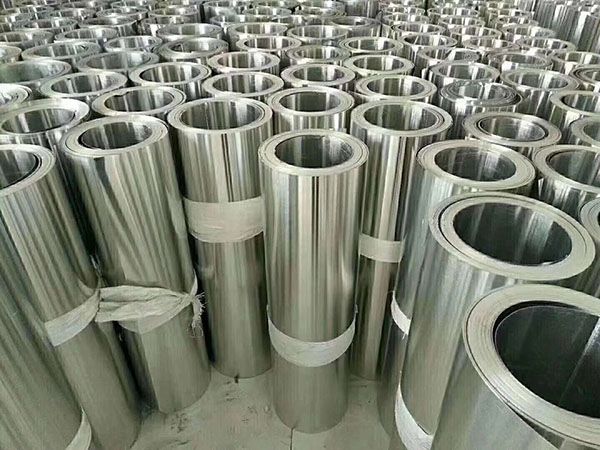Aluminum pipe insulation cladding roll is a material used for pipe insulation, widely applied in construction, air conditioning, refrigeration, petrochemicals and other fields. Its main function is to improve the insulation performance of pipes, reduce heat loss, and prevent condensation on the pipe surface, thereby improving system energy efficiency and safety.

Specification of aluminium pipe insulation cladding rolls:
- Aluminum alloy layer:
Commonly used are 1060 pure aluminum (aluminum content ≥99.6%) or 3003 rust-resistant aluminum (manganese content 1.0-1.8%), with a thickness range of 0.2-1.0mm. 1060 pure aluminum has good ductility and is suitable for complex pipe shapes; 3003 rust-resistant aluminum has strong corrosion resistance and is suitable for harsh environments such as chemical and marine environments.
- Surface treatment:
It can be laminated with kraft paper or polysurlyn film to improve moisture resistance and weather resistance; the surface can be embossed or corrugated to improve aesthetics; anodizing treatment can enhance surface hardness and is suitable for highly corrosive environments.
Features and advantages of aluminum pipe insulation cladding rolls:
- Excellent thermal insulation performance:
Aluminum cladding rolls are typically combined with insulation materials such as polyurethane, rubber and plastic, glass wool, or rock wool, effectively preventing heat conduction.
- Lightweight and easy to install:
Aluminum has a density of only 2.71 g/cm³, weighing only 1/3 of steel, making it easy to cut and install, suitable for various pipe covering needs.
- Corrosion resistance:
Aluminum has excellent corrosion resistance, adapting to various environmental conditions and extending the service life of pipes. 3003 aluminum alloy performs excellently in salt spray tests (≥500 hours without red rust).
- Fire Resistance:
Some types of insulation materials possess good fire resistance, suitable for use in high-temperature or flammable environments.
- Aesthetics:
Aluminum cladding rolls have a smooth surface and an attractive appearance, suitable for architectural applications where aesthetics are important.
Application scenarios of pipe insulation aluminum cladding rolls:
1. Industrial pipelines
- High- temperature pipelines:
Steam pipes in thermal power plants, boiler flues, etc., reducing heat loss by more than 30% through composite insulation layers.
- Low temperature pipelines:
Refrigeration pipelines in cold storage facilities and liquefied natural gas (LNG) transmission pipelines, preventing condensation and icing.
- Corrosive environments:
Desulfurization towers in chemical plants and acid/alkali storage tanks; with anti-corrosion coatings, they can withstand moderately corrosive conditions.
2. Building and municipal engineering:
- Air conditioning systems:
Insulation of air ducts and water pipes, reducing heat/cold loss and lowering energy consumption.
- Solar systems:
Insulation of hot water pipelines, improving heat collection efficiency.
- Building exterior walls:
Large factories or warehouses use aluminum cladding roll as the outer protective layer, combining insulation and decoration functions.
3. Special Environments:
- Outdoor pipelines:
Water accumulation is prevented through "water-retaining eaves" (slope ≥ 5°) and drainage holes (10-15mm diameter); suitable for heating/cooling pipelines in bridges and tunnels.
- High pressure pipelines:
Large-diameter pipelines above DN800 can use vacuum negative pressure fixing technology to improve fit and construction efficiency.
In summary, aluminum pipe insulation cladding roll is a highly efficient and economical insulation solution that effectively improves the energy efficiency and safety of pipeline systems.
live:onlinehcx